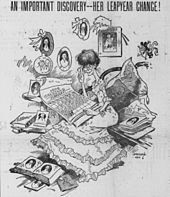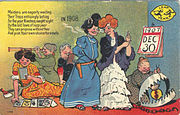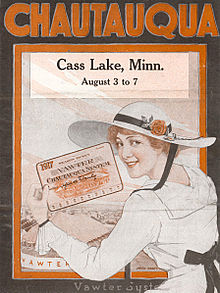| Hal Schindler | |||||
| Published: | 06/16/1996 | Category: | Nation-World | Page: | A1 |
Being burned out and shot at was nothing new to the Mormons of Nauvoo. For members of the fledgling Church of Jesus Christ of Latter-day Saints, being driven from their Illinois homes in the winter of 1845-46 was but the latest in a series of what they considered religious persecutions. They had been expelled from Jackson County, Missouri, by their neighbors in 1833; another group was rousted from Kirtland, Ohio, in 1838; and more were forced by an armed militia from Caldwell County, Missouri, in 1839. The faithful followed Joseph Smith Jr., their prophet and leader, to refuge in Commerce, Hancock County, Illinois, a peninsula settlement on the banks of the Mississippi.
In six years of back-wrenching toil--first draining the vile swamps that infested the area, then clearing brush and timber to make the land fit for settling by families in the town site they would rename Nauvoo--the Saints had built more than a thousand log cabins, nearly 300 solid brick houses and as many or more frame homes. Nauvoo was thriving in 1844 when trouble once more came baying like a wolf pack.
This time there was murder in the air. A mob bent on the assassination of the Mormon prophet and his older brother Hyrum attacked them in Carthage Jail as they awaited trial on charges of committing a riot. They were accused of breaking into the Nauvoo Expositor and unlawfully burning and pieing its type. The Expositorwas a newspaper fiercely critical of Joseph Smith. The mob members believed that with the Smiths "out of the way," their church would crumble, its power and influence disintegrate and its members panic and scatter. And Joseph Smith's death, they were convinced, would crush once and for all "that damnable doctrine" of the plurality of wives--polygamy.
In truth, the Carthage assassinations on June 27, 1844, did divide the church, but they also erupted into a furious war between Mormons and anti-Mormons that raged sporadically for more than a year before the Saints' final expulsion from the state. It was a violent end to what had been a promising, even cordial beginning with Illinois, which faced public bankruptcy in 1839. The state recognized in the Mormon migration from Missouri an opportunity to welcome as many as 40,000 new residents to its tax rolls.
From this accommodation emerged the somewhat mysterious figure of John Cook Bennett, a physician and quartermaster general of Illinois. He was an ambitious and unscrupulous rogue who saw opportunity in becoming a confidant of Joseph Smith. In a lengthy correspondence with Smith, Bennett pleaded, "Wealth is no material object with me. I desire to be happy, and am fully satisfied that I can enjoy myself better with your people...than with any other. I hope the time will soon come when your people will become my people, and your God my God."
He would have shared Smith's persecutions in Missouri, Bennett insisted, "had not the conflict terminated so speedily. I should have been with you then. God be thanked for your rescue from the hand of a savage, but cowardly foe!" When Bennett made his appearance in Nauvoo in August 1840, he was baptized, and by October was Smith's lobbyist to the Illinois Legislature, where he cultivated figures like Stephen A. Douglas and Abraham Lincoln, two of its most powerful members. By dangling the prize of a solid Mormon-voting bloc before the legislators, Bennett was able to obtain a charter creating the City of Nauvoo, with its accompanying benefits. He exulted in writing Smith, "Illinois has acquitted herself with honor...Every power we asked has been granted, every request gratified, every desire fulfilled."
The Legislature unwittingly had placed into Mormon control an instrument that would rise to haunt it. While the charter essentially copied the Springfield City Charter, it did have some innovations. It permitted, for example, a city council, including a mayor, four aldermen and nine councilmen, empowered to pass any ordinance not in conflict with state or federal constitutions. The mayor and aldermen constituted the Municipal Court, having the power of justices of the peace and the right to issue writs of habeas corpus in all cases involving city ordinances.
The charter also allowed a militia, thus opening the way for the Nauvoo Legion, which "shall be at disposal of the mayor in executing the laws and ordinances of the city corporation...and shall be entitled to their proportion of the public arms." And so in one fell swoop, in an effort to curry favor with the Mormons, the Legislature had placed in Joseph Smith's hands the legal and military power with which to create a secular dictatorship without rival in any other city in America.
It was no wonder Bennett was exuberant, and he was well rewarded for his efforts on behalf of the church. In the first municipal election in February 1841, he was named mayor of Nauvoo; Joseph and Hyrum Smith and Sidney Rigdon were elected councilmen. In the subsequent organization of the Nauvoo Legion, Joseph Smith took the rank of lieutenant general. To that time, the only other military leader to hold such a high rank had been George Washington.
The editor of the Sangamo Journal published a lengthy editorial critical of the Legislature and Smith's status as the highest-ranking military officer in America. The editor correctly pointed out that if war came, Smith would command the nation's armies, because Winfield Scott held a subordinate rank of major general. But the ability to issue writs of habeas corpus would prove to be even a mightier weapon in the Mormon arsenal. Nauvoo was to become a safe haven with justice-of-the-peace courts and probate courts issuing such writs to free arrested people regardless of the jurisdiction in which they were arrested.
The net result, Robert Bruce Flanders wrote in Nauvoo Kingdom on the Mississippi, was "not only to help protect the Mormons from legal persecution, real or imagined, but also to make 'outside' law enforceable in Nauvoo only if the city government concurred." And that aroused the opposition of the gentiles around the city. When elections rolled around in 1842, Smith used the opportunity to further strengthen the Mormon position in politics. He had himself appointed city recorder with William Clayton, one of his scribes, as deputy. That gave him control of registry of deeds, but put Nauvoo at loggerheads with Hancock County recorders, who refused to recognize deeds registered only in the city.
There were yet other problems to contend with; during the spring of '42, word circulated that Smith had predicted the impending demise of Lilburn W. Boggs, former governor of Missouri and the man who had ordered that state's militia to "exterminate" the Mormons. The prophet was quoted as saying Boggs "will die by violent hands within a year." Not too long afterward, Orrin Porter Rockwell, Smith's distant cousin and close friend, noticeably was absent from Nauvoo. On May 6, 1842, an assassin outside the Boggs home shot through a window, striking the man in the back of the head as he sat reading in his living room. Miraculously, Boggs survived four large buckshot wounds, two in the brain and two in the neck.
By the first of August, a warrant for Rockwell charging him with attempted murder was issued, and, on March 4, 1843, he was arrested in St. Louis and jailed. In Nauvoo, affairs were beginning to unravel at an alarming pace. The rogue Bennett resigned his office as mayor because, as Smith confided to his journal, "[Bennett's] whoredoms and abominations were fast coming to light."
Smith assumed the duties of mayor. Bennett, humiliated and publicly disgraced, set out to destroy him. He wrote a series of letters for publication in theSangamon Journal exposing Smith "and his secret doctrine of spiritual wifery, among other things." He also claimed Smith had sent Rockwell to kill Boggs, and that after the shooting the Mormon prophet had said "The Destroying Angel" had done the work "as I predicted." From that day forward, Rockwell bore the sobriquet "Destroying Angel."
Smith and Rockwell had been arrested--Rockwell for assault with intent to kill, and Smith for being an accessory "before the fact." When two deputies took them in custody, Smith obtained writs of habeas corpus and the deputies reluctantly turned over their prisoners to the Nauvoo city marshal. The two men were released as soon as the deputies were out of sight. The warrant for Smith was set aside as "nebulous" by a circuit judge.
Back in St. Louis, Rockwell was ordered to trial. He escaped jail once and was recaptured. A Missouri jury found him guilty, but because of his long confinement awaiting trial, he was sentenced only to "five minutes in the County Jail." After nine months on the run and in Missouri dungeons, he was free to return to Nauvoo. For some time there had been a widening breach between Joseph Smith and William Law, a member of the church's First Presidency, primarily over Law's wife. Rumors had reached Law that Smith had tried to persuade her to become his spiritual wife. And so the seeds of discontent spread through the city, with Law and his brother Wilson, Chauncey and Francis Higbee, Robert D. Foster and Joseph H. Jackson at the center of intrigue against Smith and his followers.
Jackson was an adventurer and notorious scoundrel; the Laws, Higbees and Foster, however, were wealthy and influential in Hancock County. They broke away to organize their own reformed church. From this clique grew the idea for the creation of a newspaper to attack the Smiths. And so was born the Nauvoo Expositor. It was intended to be a sounding board for their opposition views and tear away the secrecy surrounding the plurality of wives being taught by the church's hierarchy. But it lasted only one issue, for Smith moved swiftly to crush the dissidents. In doing so he unleashed a whirlwind and sealed his doom.
Seven years earlier, Illinois had been torn by the murder of an abolitionist editor and Presbyterian minister named Elijah Lovejoy, who set up a newspaper in Alton, Illinois, to fight for anti-slavery. His press twice was attacked by a mob and in the second assault Lovejoy was shot to death. The incident made Illinois the object of national scorn, and the state still was smarting under criticism when the Expositor affair occurred. Smith's City Council passed a libel law and then charged the Expositor with being a public nuisance. In the next breath, Smith ordered the city marshal to abate the nuisance--"destroy the press and pi the type." But even Smith was unprepared for the uproar that followed. Freedom of the press once more had been trammeled in Illinois, and the residents would have none of it.
The Expositor editors swore out complaints and found enthusiastic backing from another enemy of the Smiths--Thomas Sharp, editor of the Warsaw Signal, who editorialized in blind fury: Citizens arise, one and all!!! Can you stand by, and suffer such infernal devils! To rob men of their property rights, without avenging them. We have no time for comment! Everyman will make his own. Let it be with powder and ball.
Joseph and Hyrum thought of leaving Nauvoo and making tracks for the Rocky Mountains, but halfway across the Mississippi, Joseph was persuaded to return to surrender at Carthage and face trial. Governor Thomas Ford interceded to calm the Smiths' apprehension regarding their safety and promised protection while they were in Carthage Jail. There were strong questions concerning Ford's role in what was to transpire, with some Mormons suggesting that the chief executive was connected with the assassination plot, for he left Carthage for Nauvoo after promising he would stay.
In any case, the Carthage Greys, a militia company, was assigned to guard the jail, but with an armed mob painted and howling, as one writer put it, "like demons vomited from hell," the militia detachment commanded by Lt. Frank Worrell offered only token resistance and stepped aside, allowing the attackers to gain the second floor where the Smiths, John Taylor and Willard Richards were sequestered.
After a brief struggle--during which Joseph Smith, who had armed himself with a smuggled pepperbox revolver, reached around the doorjamb and fired all six chambers--Hyrum fired through the door and was struck in the face by a mobber's bullet. He was hit by three more shots and died. Joseph leaped to the window, where he became an excellent target for those outside as well as the intruders on the stairway. Two shots from the doorway struck him in the back; a third, fired from the ground outside, penetrated his chest. "O Lord. My God!" he screamed, and plunged to earth.
In the melee, John Taylor, armed only with a cane, swung it wildly, fracturing gun hands as they forced the door. But the attackers burst through and Taylor was shot--in the thigh, in the chest (the bullet was stopped by his pocket watch), in the left forearm and in the left knee. The floor of the cell literally was awash with the blood of the three Mormons. Richards, bleeding from a bullet nick on the left ear lobe, had been forgotten by the mob almost at the instant he thought himself a dead man.
Once Joseph Smith had fallen from the second-story window, the mob began to disperse. Someone shouted, "The Mormons are coming!" and the milling crowd fled in panic. But no Mormons came. Richards went for help for the wounded Taylor. (They survived to make the trek West.)
In the ensuing months, the question of church leadership was resolved when Brigham Young, president of the LDS Quorum of the Twelve Apostles, prevailed over Sidney Rigdon to become president of the church. Young immediately set about consolidating the faithful by pledging to finish the Nauvoo Temple, so that members could receive their churchly "endowments." And within six months he was toying with the notion of an exodus that would take the Saints beyond the Rockies, perhaps as far as Oregon or California. But a power struggle continued among the church leaders, until finally Young threw Rigdon "off his shoulders," and by September 1844 Rigdon was--declared an apostate.
In the three months since the Smith killings, the anti-Mormons had remained reasonably subdued, waiting to judge the response of the Saints. When the Mormons failed to abandon Nauvoo, the "anti's" sought to hasten the process. Soon there came reports of "wolf hunts" and house-burnings by roving marauders out to intimidate Mormon settlers. Young ordered out the Nauvoo Legion, and the Illinois Legislature responded by revoking the precious Nauvoo Charter, thus dismantling the Legion and voiding the right by municipal courts to issue habeas corpus writs. In a single stroke, the Legislature had emasculated the Mormons.
By mid-May 1845, members of the Carthage mob were brought to trial, and one of the key witnesses for the defense was Lt. Worrell, who had charge of the militia's guard detachment the day of the assassinations. Worrell refused to answer whether rifles carried by the Greys that day had been loaded with blanks. After a dozen days of testimony, the defendants were acquitted. Soon after, the house-burners stepped up their terror and night-riding became a popular pastime as Mormon battled anti-Mormon. A Mormon-elected county sheriff, Jacob Backenstos, set out to capture the marauders, until he himself became their target.
On one occasion, a small party of riders began chasing Backenstos on the road to Warsaw. The sheriff whipped his carriage to a nearby railroad siding where several Saints were watering their horses. Recognizing two of them as Porter Rockwell and Return Jackson Redden, Backenstos sputtered his predicament and quickly deputized the men. "Don't worry," Rockwell said, "we've got our pistols and two rifles." Backenstos shouted to his pursuers to halt as they came galloping on. Rockwell took a bead on the lead rider, who, it later was said, was reaching for a pistol. A slug from Rockwell's rifle took him just above the belt buckle and fairly catapulted him from the saddle. Frank Worrell died before his companions could get him to Warsaw. Backenstos and Rockwell later would be tried for the shooting. Both were acquitted.
The house-burnings increased to the point of leaving an ashen trail of Mormon homes from one end of Hancock County to the other, until Governor Ford stepped in to negotiate a truce. The Mormons promised to abandon the county by the next spring. So began the expulsion of the church from the City of Joseph in February 1846. Work to complete the temple was a top priority and droves of church members were receiving their endowments in ceremonies around the clock.
Mormons sacrificed their homes for hard cash. Some, like John D. Lee, who refused to be stampeded, turned down absurdly low offers. But, ultimately, he was a loser. His home of twenty-seven rooms, which cost $8,000 to build (and which would have been worth $50,000 in Salt Lake City), was turned over to a church committee to be sold to help the poor join the westward trek. "I was afterwards informed they had sold the house for $12.50!"
Twelve thousand wagons were constructed for the journey ahead, and by May some 16,000 Mormons had crossed the Mississippi and taken up their line of march westward. They left behind perhaps a thousand of their fellow Saints who thought to stick it out. But a posse of some 600 anti-Mormons moved on Nauvoo, and in a furious engagement lasting little more than an hour September 12, 1846, with the defenders, involving cannon fire and rifles, three Mormons and one non-Mormon were killed. The Mormons capitulated and subsequently abandoned Nauvoo and joined the exodus to Winter Quarters at Council Bluffs, Iowa.
















































